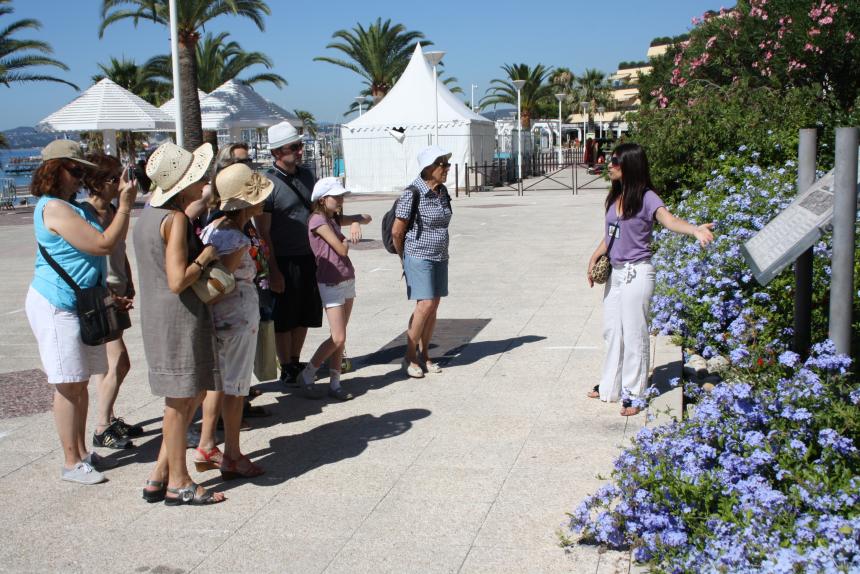Have you ever heard about the “Gueyeurs”. In day gone by, they would have carried you on their backs across the Var to the Earldom of Nice and Italy. The village was the last stop in the kingdom of France. This shaped an identity, the evidence of which can still be found.
A young, rapidly growing town, Saint-Laurent-du-Var has both geographical and economic benefits which make it a town for the future. However, the city still remembers its roots which are a pride of its inhabitants.
The most convincing testimony of this continuity of the past is without doubt the Old Village, with its picturesque streets and 11th century Roman church.
Saint-Laurent-du-Var, an historic town…
A transit and passing point for crossing the Var, a particularly temperamental alpine river, Saint-Laurent-du-Var has suffered the hazards of this unusual geographic and strategic position which has greatly affected its history.
Across the centuries, epidemics, wars, invasion and floods have punctuated different stages in the development of Saint-Laurent-du-Var. The inhabitants travelled along the right bank of the war, never crossing it, before settling here towards the end of the millennium.
There have been two main construction periods in the Old Village. The first dates from the Middle Ages (11th and 12th centuries). In this times of great insecurity, Saint-Laurent was built in a dominating position, easy to defend and whit the church as the central and high point.
Following various disasters which took place between the 12th and 15th centuries, the village found itself depopulated and abandoned. It had to resort to Italian immigration from the nearby region of Liguria and Saint-Laurent-du-Var was reborn under its influence. Buildings then took into consideration the natural element such as water, wind and sun. The principle of “calandage” (building of side or central trenches), still visible in Rue Raphaël Monso, began to be used to remove rainwater while streets and squares were built to encourage shade. The new Saint-Laurent was built on a grid pattern with streets cutting across each other at right angles forming a rectangle and integrating earlier buildings. The materials used include large stones rolled from the bed of the Var for the Walls, street pavements and ramparts and thin red bricks for the archways, door and window frames and doorsteps.
Typical houses from this era (bumpy walls, honey coloured, with pebbles that stand out against the dark cement) are still visible in the Rue des Ramparts and at the western end of the Rue du Var with its lookout tower. The houses were generally built over three floors, a ground floor which comprised the cowshed or cellar, the first floor where the people lived and the attic which was used as a barn, store or drying room. Due to the narrowness of the streets and the limited number of windows, the house were very dark inside.
During the centuries that followed, changes due to demographic progress took place : raised houses, attics turned into bedrooms or drying room for fruit, doorways were made wider to get larger objects through… As a result, these doorways were sometimes transformed and the resulting archways are still visible in some houses in the village.
It was only in the 18th century that building outside the ramparts, several mills and sawmills along the side of the river and in the district of Pignatières. But this development remained limited due to the insecurity related to its position neighbouring the border.
The emblem
The first sign of the Saint-Laurent-du-Var armorial appears in 1866 in “The Armorials of Provencal Communes” by Louis de Bresc.
Its coats of arms appear in it as gules with a silver grill, with the capital letters L and S in gold on either side of the main lever.
The current emblem of Saint-Laurent-du-Var is almost identical to its ancestor, a silver grill on a red background with two letters L and S in gold. Two elements have however been added, the military decoration the Croix de Guerre with the Ordre de l’Armée for the contribution made by the population and its resistance for the Liberation.
The Grill represents the martyr Saint-Laurent who according to legend was burned alive. The letters L and S stand for Laurentius Sanctus (Saint-Laurent). They are accentuated by the proud Provencal motto “Digo li qué vengon” (Tell them to come), which is a sort of bravado related to its former situation as a border town.
HISTORIC COURSE OF THE OLD VILLAGE:
Discover the old village with your family in complete autonomy and at any time thanks to 11 information panels. For a more playful version, the panels come with the e-walk application to download for free on the download platform of your smartphone. This tour is accessible to people with reduced mobility.
(for more information, look at the flyer Historical course of the old village )


